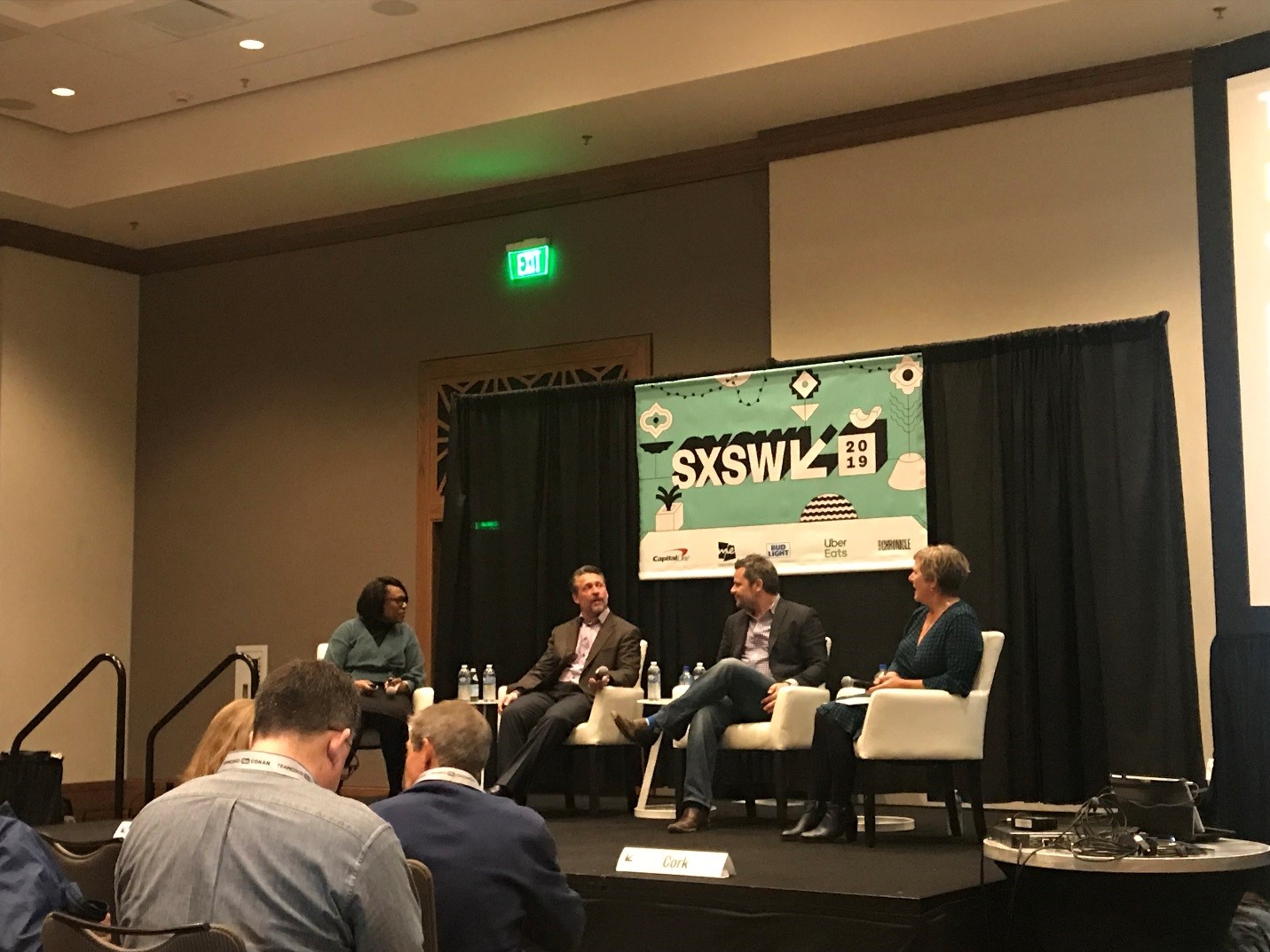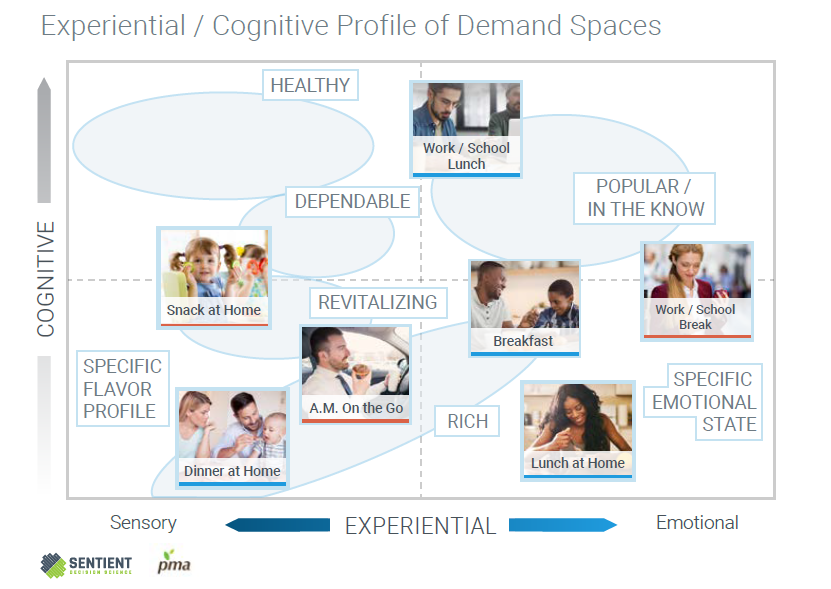Deep in the heart of Texas lies the annual SXSW expo, a summit of artistic, educational, and entertainment sessions—and a healthy serving of tex-mex tacos. In an environment filled with tech startup entrepreneurs and Fortune 500 representatives, we were proud to see so many discussions about food and electrified to see industry professionals in attendance to clear the air about the many criticisms and misconceptions facing fresh produce.
Here’s what we took away from this year’s SXSW:
We have to provide more than just an appeal to health to propel this industry forward.

During the PMA panel called “Primal Instincts to Fuel Your Food Movement,” we learned about the different demand spaces that encourage shoppers to move further down the path to purchase. These categories, which provide opportunities for marketers to connect with shoppers and influence purchase decisions, include:
- Revitalization
- Specific Emotional State
- Specific Flavor Profile
- Richness
- Dependability
- Popular/In the Know
- Healthy
As Lisa Cork noted during the session, the more taxonomies we can tap into, the faster our brands will grow. Fresh produce marketers must go beyond the “healthy” taxonomy and position their brands in such a way that they evoke feelings of emotion, richness, and popularity. Just consider the increased demand in celery as the celery juice trend continues to grow—how can you align with a growing trend (or create one of your own) to tap into that category?

Taxonomies that affect purchase decisions, courtesy of PMA
Shoppers want to align with brands that share their values.
In a session hosted by Creative Breed, we learned that people are 79% more loyal to purpose-driven brands. That’s an incredible statistic, and one that works in our favor as an industry with a collective mission to increase consumption of healthier foods. But we also learned that we need to be doing a better job of telling our stories in a way that communicates our values. Cheryl Miller Houser of Creative Breed informed us of the three steps to take when telling our brand stories so that we can evoke feelings of empathy with our audience:
- Feature people who are universally relatable and effectively express the full range of human emotions
- Show your struggle and the battles and challenges you have worked to overcome
- Provide uplift and a call to action
This message was echoed in a separate panel about “Tomorrow’s Perfect Food Story,” during which the panelists highlighted the fact that effective and empathetic storytelling empowers the community of people that already support your brand—while also cluing in outsiders about the values you may share.
In a separate session, Margaret Coles from Goodby Silverstein & Partners called upon marketing professionals to create a change, emphasizing that “we have a crisis in marketing—a lack of interesting.” She challenged us to consider creating content and marketing collateral that align with the wants and needs of our target audiences, because “nobody looks at ads—they look at what’s interesting.”
From session to session, we heard these same sentiments echoed. As marketers, we need to position our products in a way that demonstrates their value beyond their status as healthy foods that nourish our bodies. We must create experiences and emotions that shoppers are seeking.
The fresh produce industry is not alone in the quest to understand influencer marketing.

We attended a session called “Influencer Marketing in 2025: The Future of Human Media.” First of all, seats were hard to come by. In an environment with thousands of marketers, a tiny fraction of which come from the fresh produce industry, this was reassuring. We learned several things during this portion:
- Fresh produce is not alone in its quest to get to the bottom of what influencer marketing looks like and how we can maximize human media to increase brand awareness. Marketers across all industries struggle to understand the value and ROI of influencer partnerships.
- Measurement is an essential key to influencer marketing success. Ryan Berger from Hypr sat on the panel and discussed his search engine that not only provides access to influencers on a micro and macro level, but it also provides analytics about their engagement rates, follower demographics, and overall klout. This information is key to proving the value of human media—in order to see the value of your partnerships, you must fully understand who your partner is reaching. When searching for the right influencer for our brands, we must learn to focus more on the audience and less on the influencer.
- Refrain from one-off partnerships. In order to make the most impact with influencers, you need to determine a 360 degree strategy that includes influencer engagement at more levels than just social media.
- Repetition kills authenticity. If an influencer is posting about a new brand every single day, their audience will not perceive their messages as authentic. And if an influencer posts the same message about your brand over and over again, their audience will form the idea that their influencer has been provided a script. To address this, partner with influencers who don’t necessarily partner with dozens of brands, and instead, only partner with a select few brands that they actually like and use. And if you plan to partner with an influencer more than once (which you should—see note number 3), you must differentiate the message from post to post in order to maintain authenticity.
This year’s SXSW shed light on growing consumer trends that we don’t regularly discuss within the produce industry, like regenerative organics and social inclusion. In addition to these new topics of discussion, we felt validated by discussions about things we do address as an industry every day, including sustainability, food legislature, and marketing our unique stories. The PMA panel empowered our industry with a voice from growers and other fresh produce professionals, and beyond that session we gleaned that we need to continue to strengthen our messages to better educate people who are misinformed about the nature of fresh produce. In a time where consumers are confused and alarmed about buzzwords like “GMOs” and “pesticides,” it is more important than ever to lead with transparency and educate our audiences about what we practice in order to bring fresh food to the table—and events like this are an important part of beginning those conversations. One thing is for sure: SXSW should be on the calendars of more fresh produce marketers in 2020!
Have something to add? Leave us a comment below, or tweet to us at @TheCoreBlog!
{{cta(‘bcd8a198-582f-4f95-bbc3-fd4254518f02’)}}












